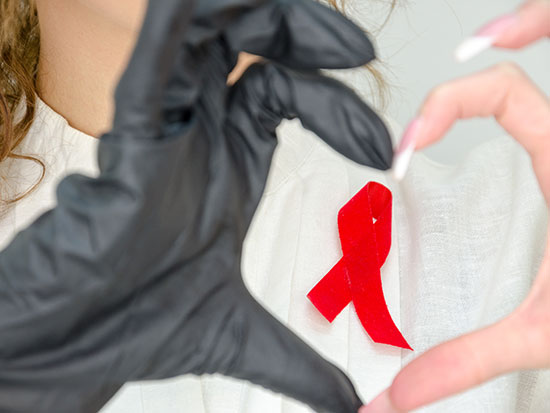 Enrolling adolescents and young adults living with HIV in a program to help navigate care significantly increases the number of youths who remained in care compared with national estimates, according to study published in the Journal of the American Medical Association Pediatrics.
Enrolling adolescents and young adults living with HIV in a program to help navigate care significantly increases the number of youths who remained in care compared with national estimates, according to study published in the Journal of the American Medical Association Pediatrics.
“An estimated 60 percent of HIV-infected adolescents and youth are unaware of their diagnosis,” said Craig Wilson, M.D., professor of epidemiology at the UAB School of Public Health, chair of the Adolescent Medicine Trials Network for HIV/AIDS Intervention. “By creating a program to help patients navigate the health care system, we hoped to be able to diagnose, treat and care for HIV-infected youth earlier and engage them to continue to care for them through the duration of the disease and their lives.”
Disparities for those ages 13 to 24 with HIV include lack of knowledge on how to obtain health care and a failure to develop relationships with health care providers. This leads to a lack of engagement, which can impair access to anti-HIV therapy that could slow disease progression and prevent HIV transmission to others.
The National Institutes of Health-funded study created a collaborative partnership between the ATN and collaborators from the Centers for Disease Control and Prevention, the Health Resources and Services Administration, and NIH’s Eunice Kennedy Shriver National Institute of Child Health and Human Development to address National HIV/AIDS Strategy goals. These NHAS goals include increasing access to care, reducing HIV-related health disparities and improving coordination of the national response to HIV.
The multiagency demonstration program evaluated research protocols requiring study sites to develop partnerships with local health departments, create formal referral networks between local HIV testing sites and service providers, and enlist full-time care coordinators to help ensure that newly diagnosed youth attend clinic appointments. The program also connected study sites with community stakeholders and local Ryan White HIV/AIDS Program Part D sites, which provide services for women, infants, children and youth with HIV.
| “By creating a program to help patients navigate the health care system, we hoped to be able to diagnose, treat and care for HIV-infected youth earlier and engage them to continue to care for them through the duration of the disease and their lives.” |
Between 2009 and 2016, the researchers found that 75 percent of nearly 4,000 youths in the program were linked to care, with 88 percent remaining in care throughout the study. In contrast, CDC estimates that, nationally, about 68 percent of youths with HIV are linked to care, with only 55 percent remaining in care. In addition, all sites demonstrated improved linkage to care outcomes through the activities of the program.
The findings suggest that a youth- and community-focused program that integrates services at multiple levels is effective at improving long-term outcomes for adolescents and young adults with HIV.
Institutions involved in the study include the University of South Florida in Tampa, Children’s Hospital of Los Angeles, Children’s National Medical Center in Washington, D.C., Children’s Hospital of Philadelphia, John H. Stroger Hospital of Cook County in Chicago, Montefiore Medical Center in New York, Tulane University in New Orleans, University of Miami School of Medicine, St. Jude Children’s Hospital Research Hospital in Memphis, Baylor College of Medicine in Houston, Wayne State University in Detroit, Johns Hopkins University in Baltimore, Fenway Health in Boston, University of Colorado in Denver, and investigators at the University of Indiana, Johns Hopkins All Children’s Hospital in Tampa and UAB.
ATN is funded by NICHD and other NIH institutes, including the National Institute of Mental Health and the National Institute on Drug Abuse.